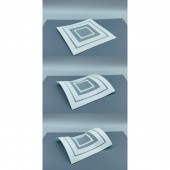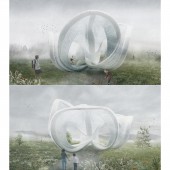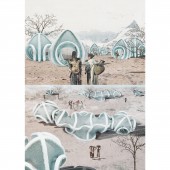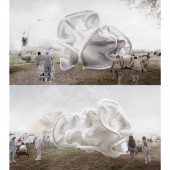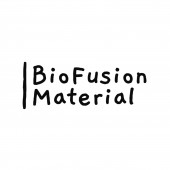Self Morphing 4D Printing Textile by Zixiang Zhang |
Home > |
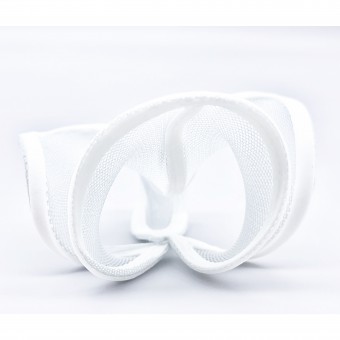 |
|
||||
| DESIGN DETAILS | |||||
| DESIGN NAME: Self Morphing PRIMARY FUNCTION: 4D Printing Textile INSPIRATION: Shape changing materials allow greater design freedom and customizability of products over their life cycle. In one production step, several functions can be integrated into a product based on materials, and process costs can be saved compared to classic production sequences. This inspired me to explore the self-assembly value of 4D printing in the shape-making process, focusing on its potential to substantially improve the design, manufacture, and performance of lightweight structures. UNIQUE PROPERTIES / PROJECT DESCRIPTION: This project uses shape memory polyester on stretchy textiles to create self morphing material. It simplifies construction by forming complex 3D lightweight structures from basic 2D fabrication. This material reduces carbon footprint during transportation and cuts down on labor and scaffolding by shaping itself on site. Additionally, it can serve as a self-assembling temporary shelter, functioning for at least a month and potentially longer in extreme conditions. OPERATION / FLOW / INTERACTION: Making Process 3D print 50% of the layers on the platform. Add a layer of stretched fabric to the 3D printing. 3D print the remaining 50% of the layers on stretched fabric Morphing Process. Stretched fabric can store energy and 3D print closed curves on stretched fabric. Under heating conditions, the 2D composite material will self morphing into various 3D shapes. Two heating methods include the heating plate and warm water. PROJECT DURATION AND LOCATION: The project started in September 2022 and finished in February 2023 in London, UK. |
PRODUCTION / REALIZATION TECHNOLOGY: Shape memory polyester, Stretchy textiles, 3D Print SPECIFICATIONS / TECHNICAL PROPERTIES: 20cm×20cm. However, the size is variable, depending on the size of the 3D patterns printed on the stretchy textile. TAGS: 4D Self Morphing, Shape Memory Polyester, Temporary Shelter, Sustainable Design, Innovative Material RESEARCH ABSTRACT: This research demonstrates how to form 3D lightweight structures from 2D fabrication and develop complex structures based on the arrangement of simple patterns. Select stretchy fabric as the energy storage and bending medium for 4D printing. Experiment with stretched elastic bands in varied orientations within 3D printing layers to assess transformation performance under tension. Conduct experiments on the transforming structure of 4D printing based on pattern types and arrangement. CHALLENGE: To test the performance of the Self morphing textile, I should consider three key factors, the intensity of the shape change force, the adequate amplitude of the movement, and the time in which the movement can occur. Meanwhile, I should conduct many experiments to identify the transformation regularity. ADDED DATE: 2024-03-29 05:35:02 TEAM MEMBERS (1) : IMAGE CREDITS: All images and video credits belong to Zixiang Zhang. |
||||
| Visit the following page to learn more: https://2023.rca.ac.uk/students/zixiang- |
|||||
| AWARD DETAILS | |
 |
Self Morphing 4d Printing Textile by Zixiang Zhang is Runner-up for A' Design Award in Textile, Fabric, Textures, Patterns and Cloth Design Category, 2023 - 2024.· Read the interview with designer Zixiang Zhang for design Self Morphing here.· Press Members: Login or Register to request an exclusive interview with Zixiang Zhang. · Click here to register inorder to view the profile and other works by Zixiang Zhang. |
| SOCIAL |
| + Add to Likes / Favorites | Send to My Email | Comment | Testimonials |


